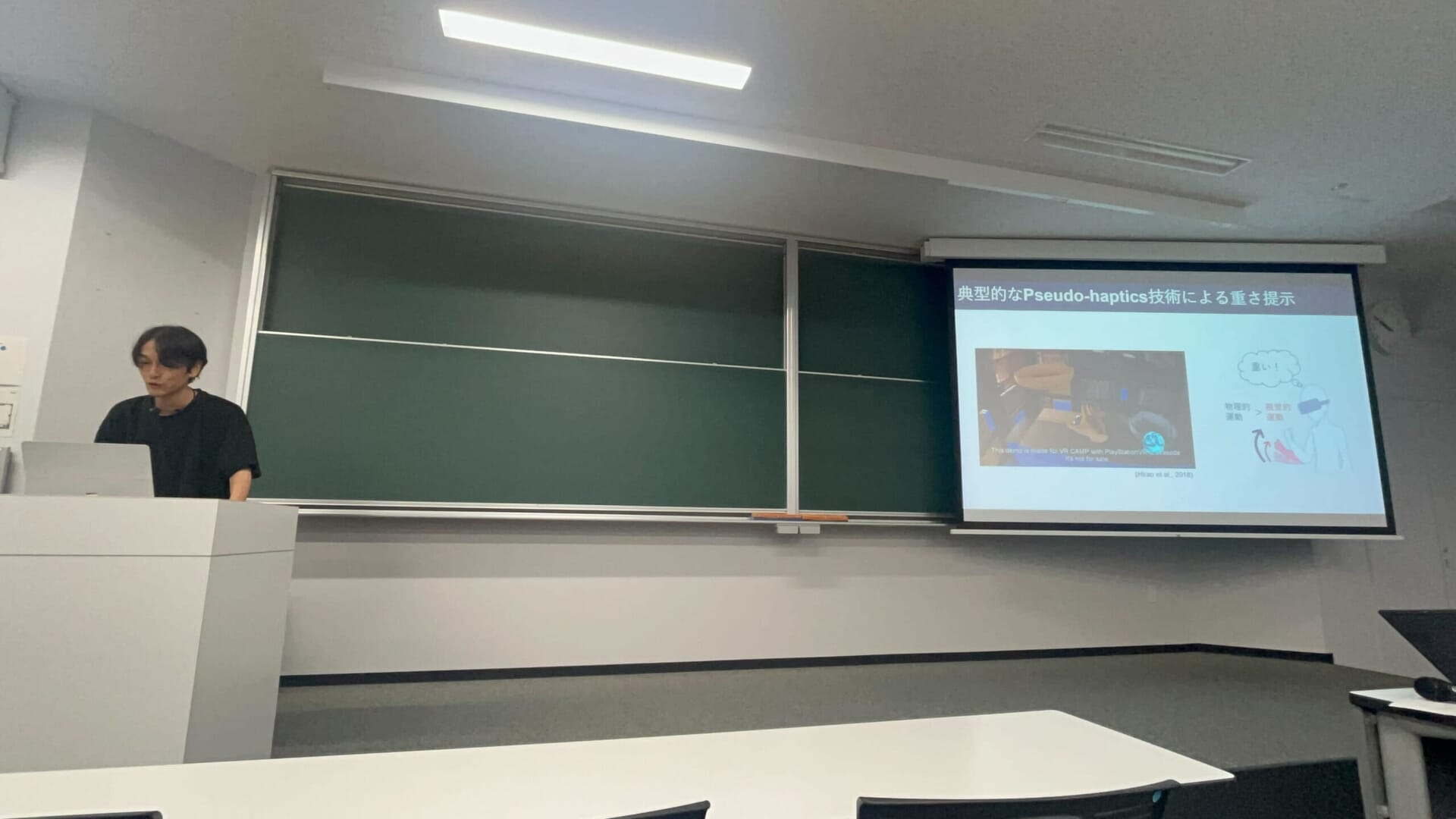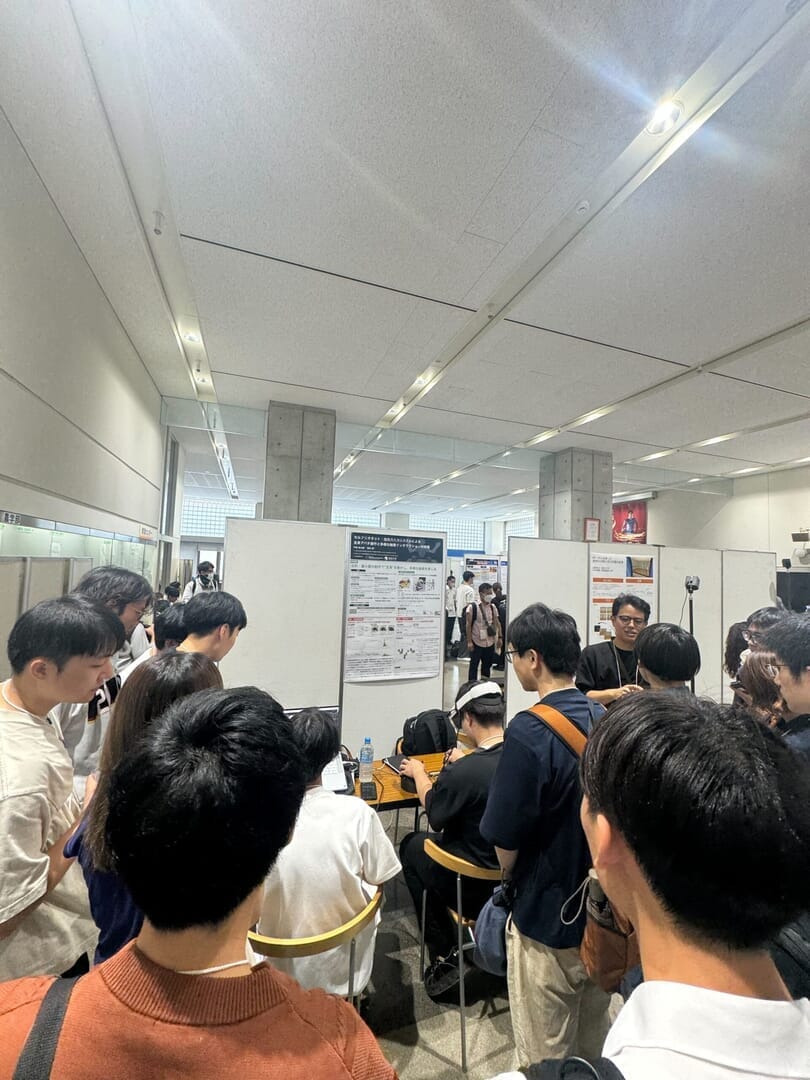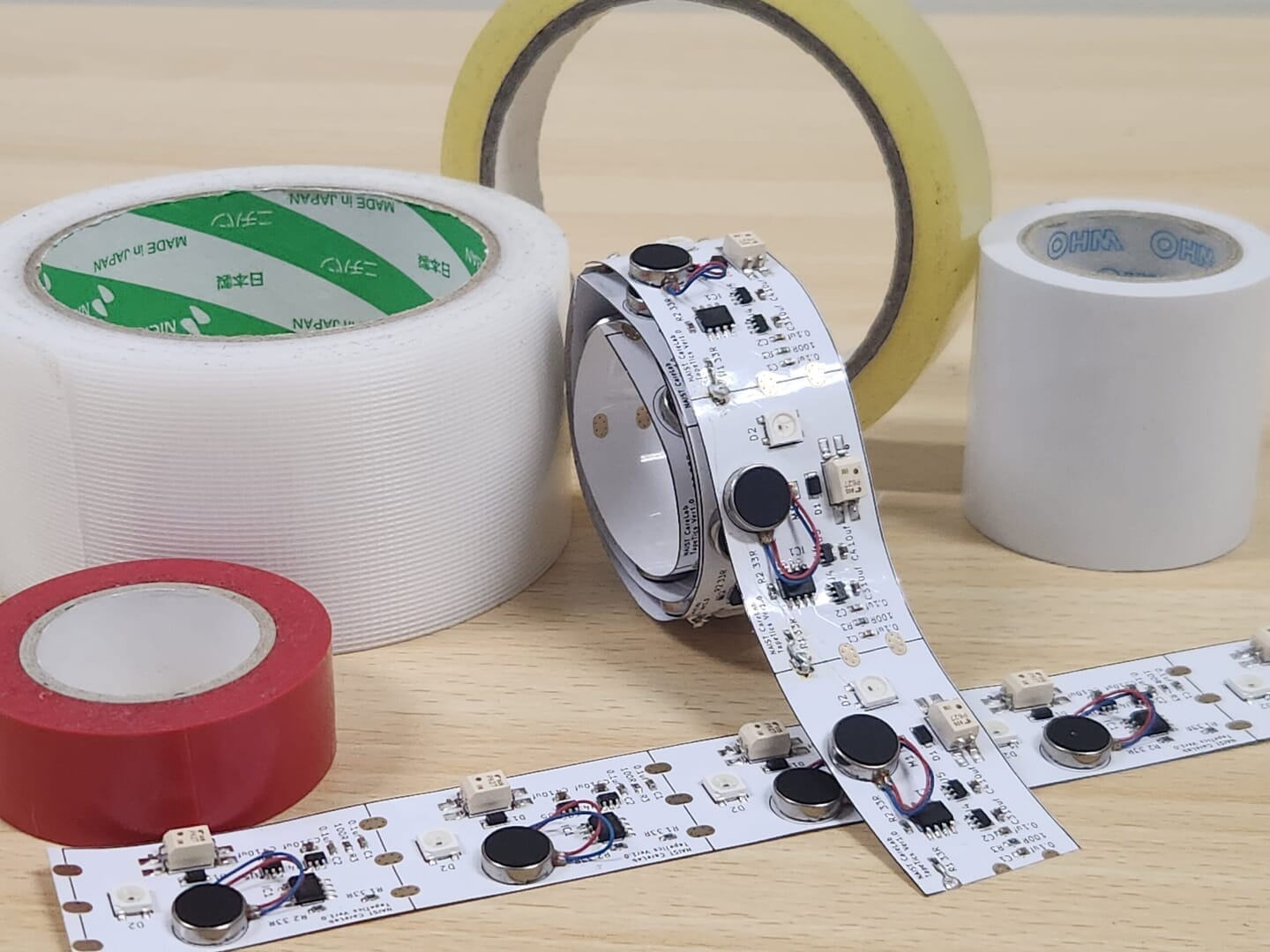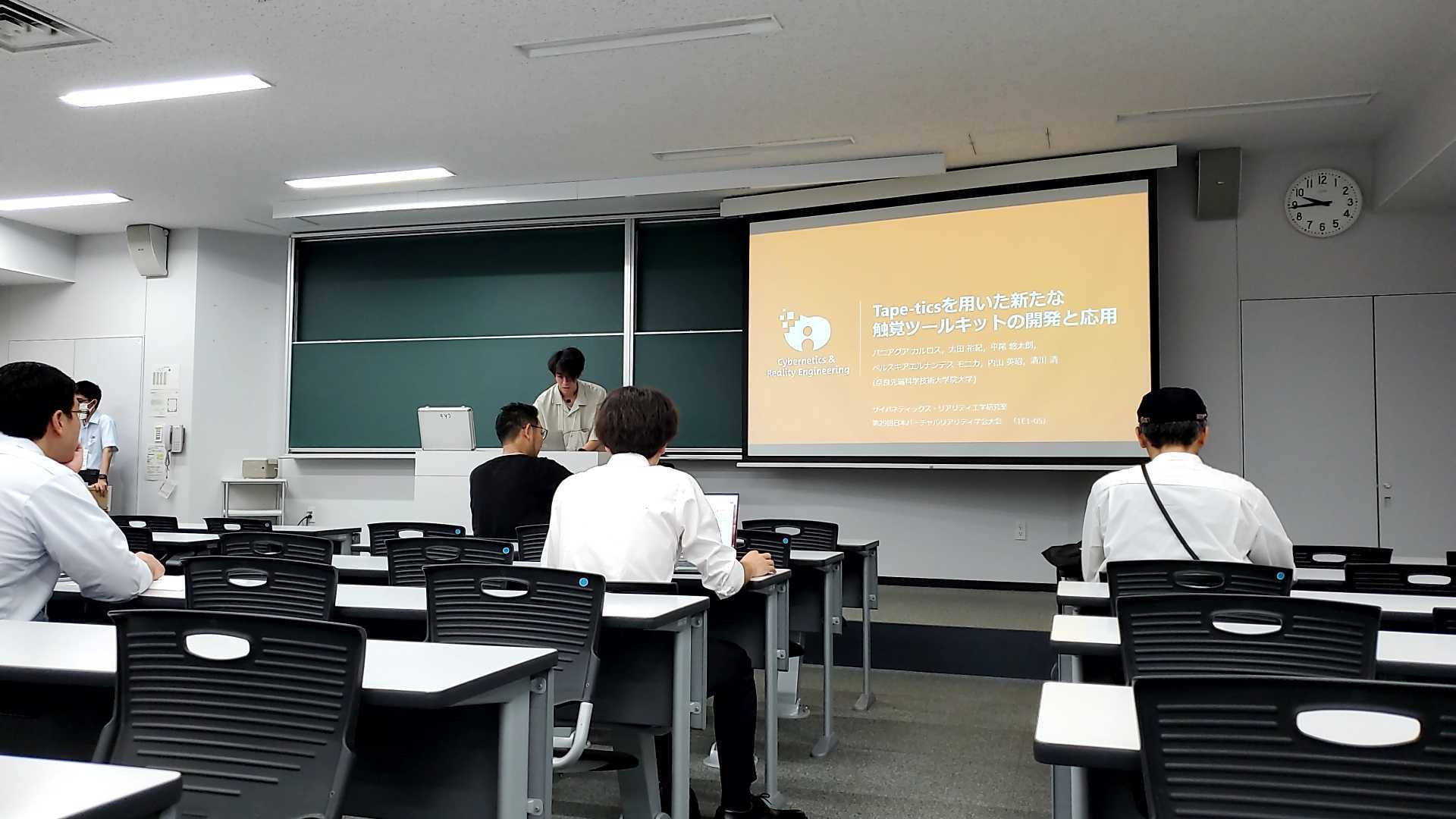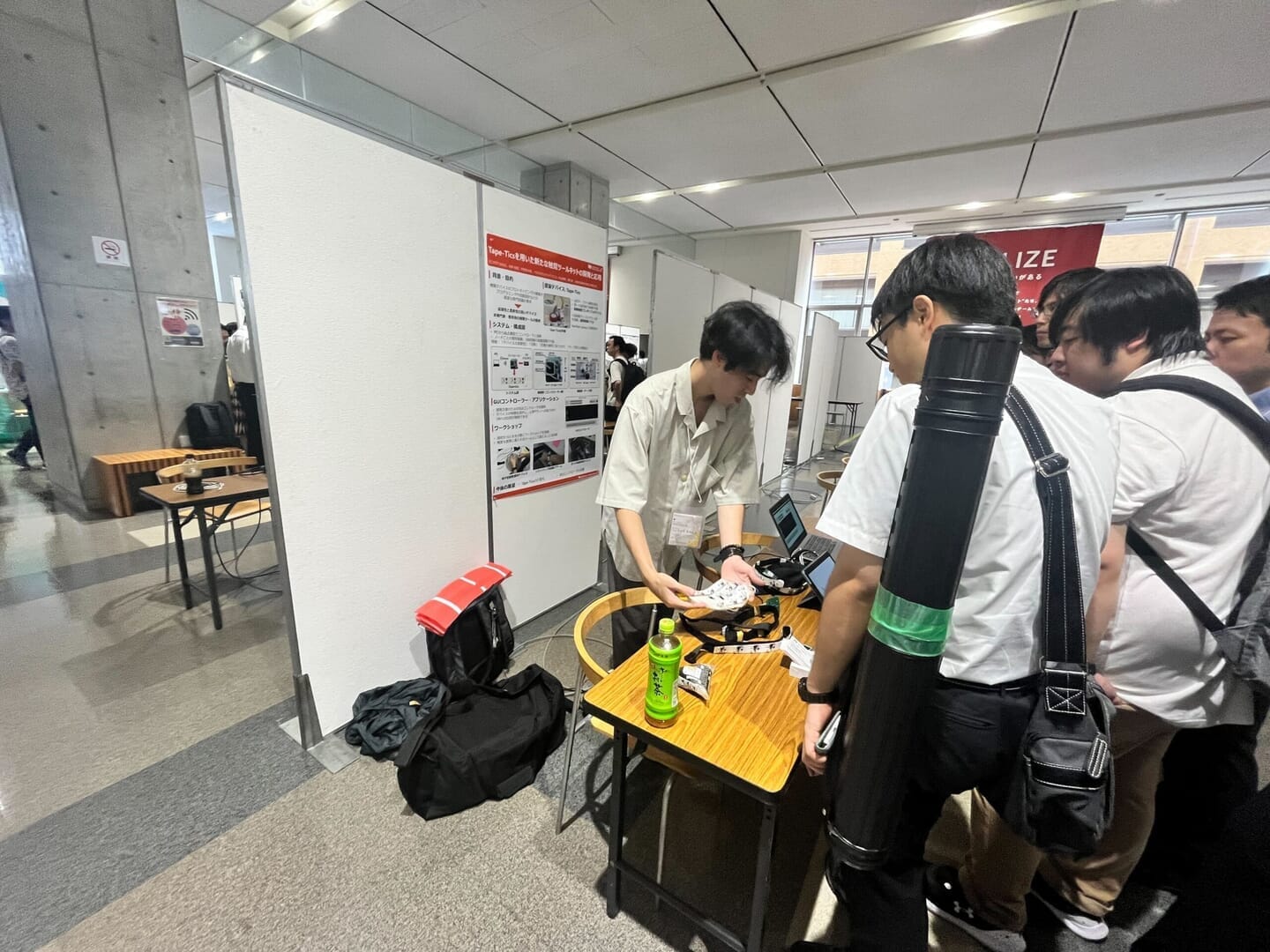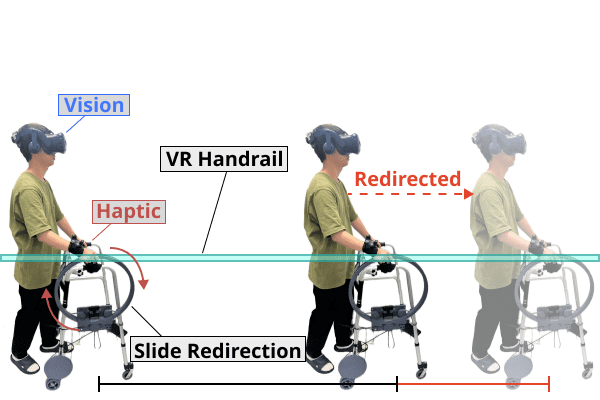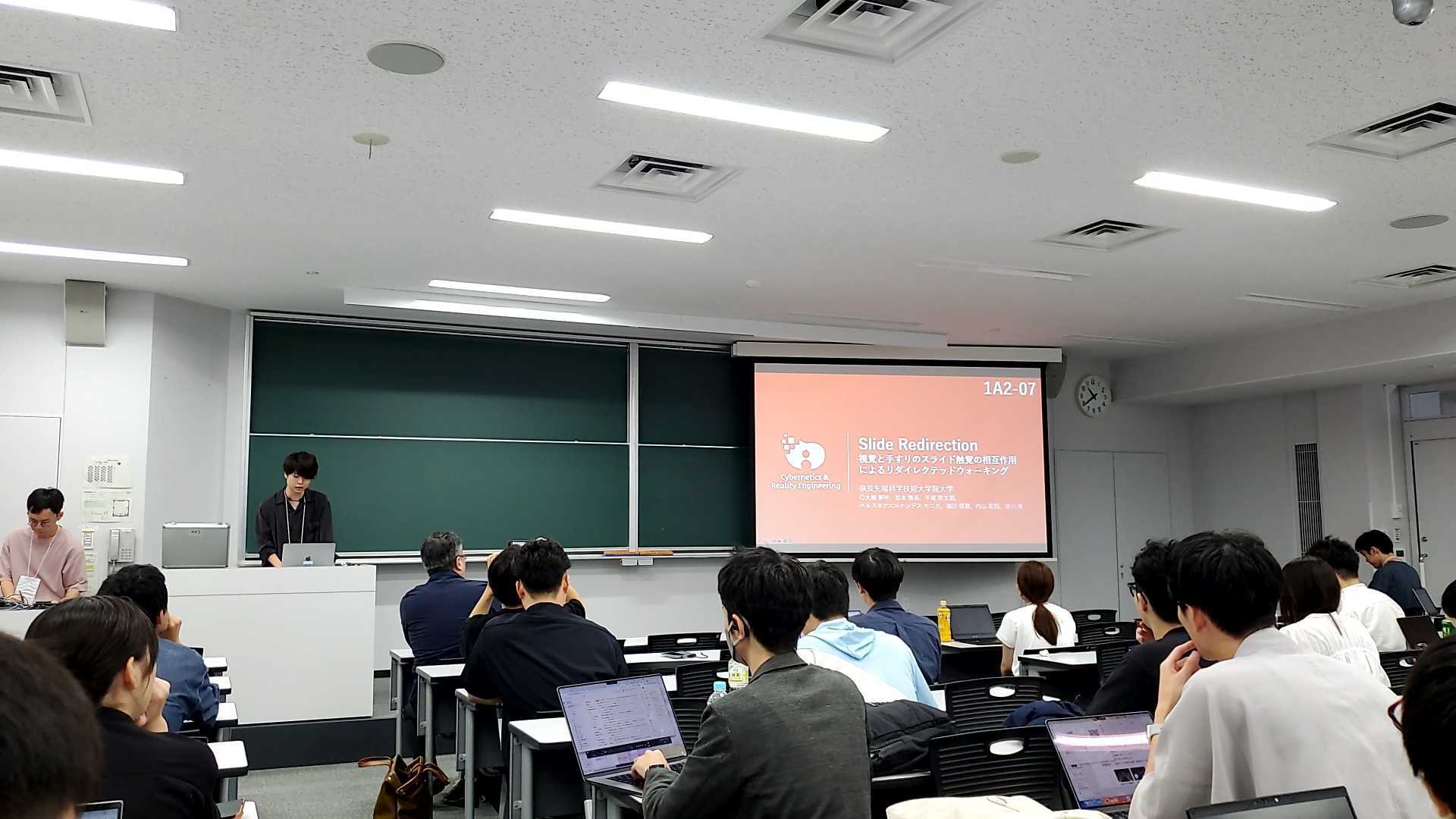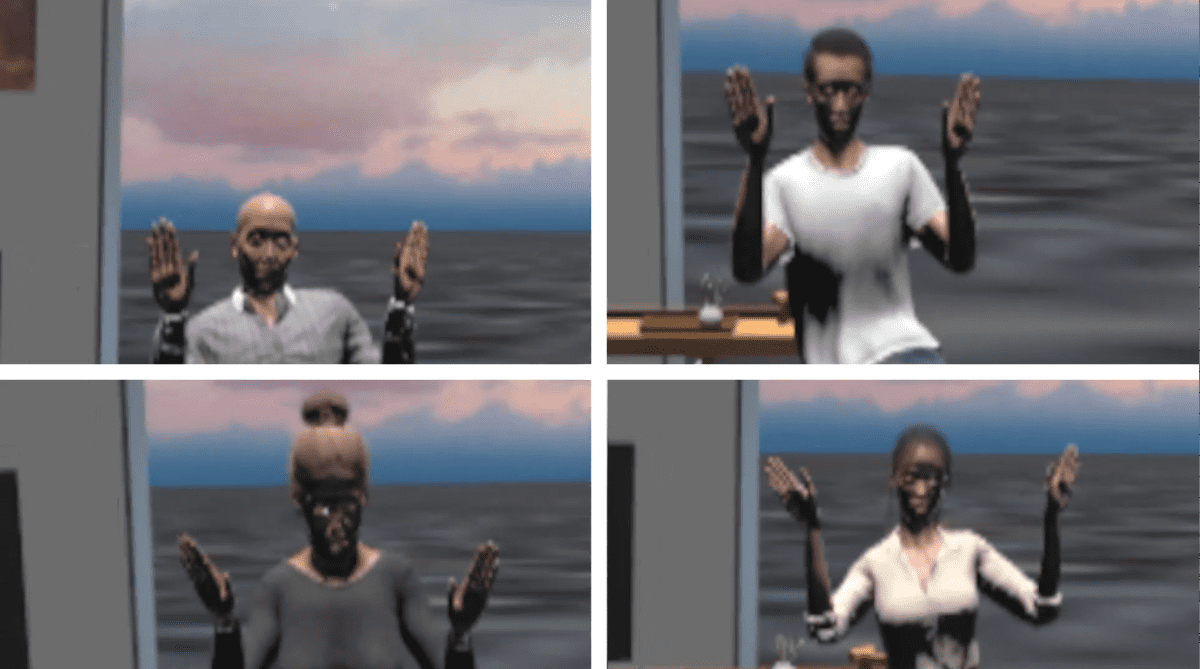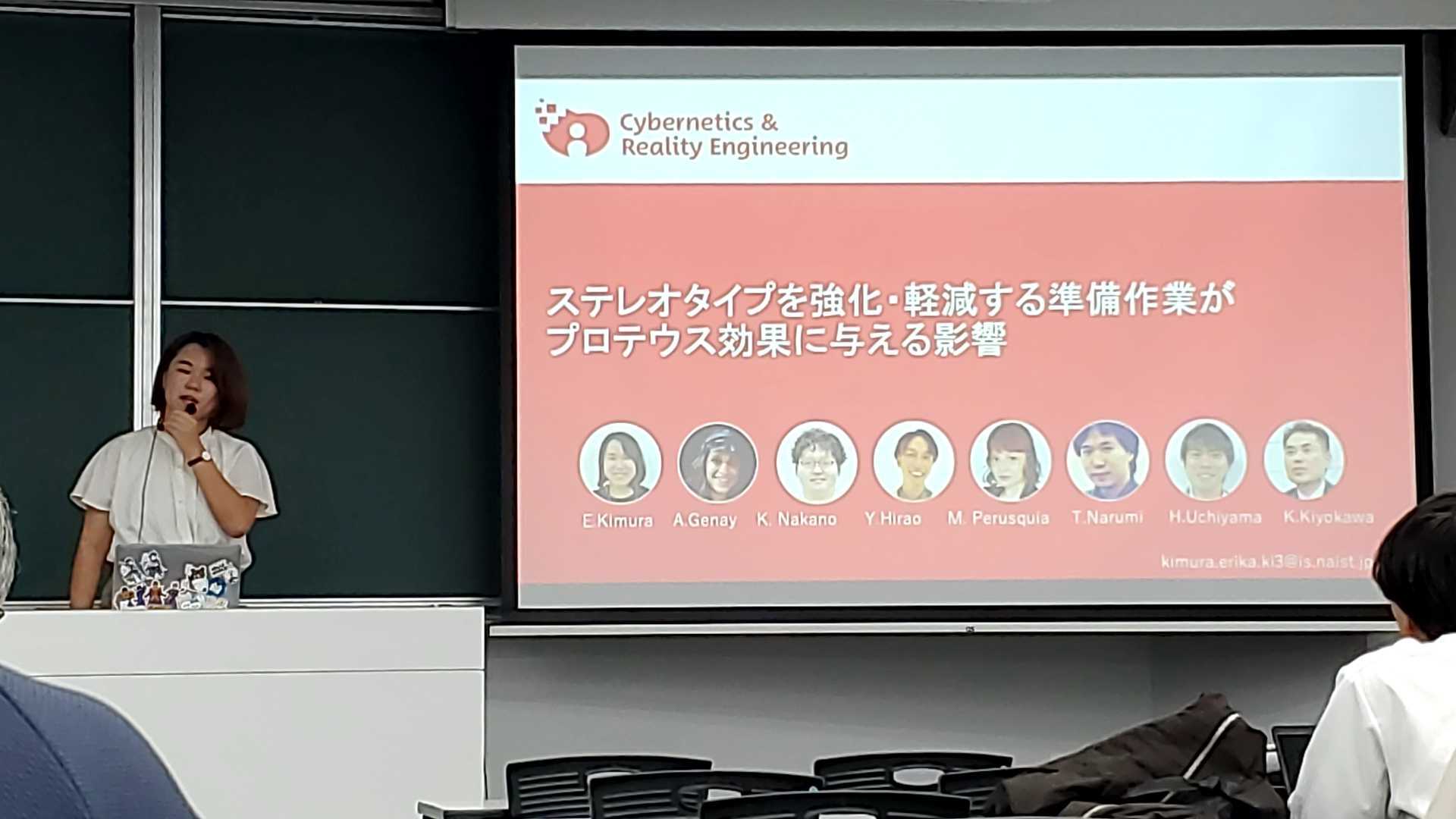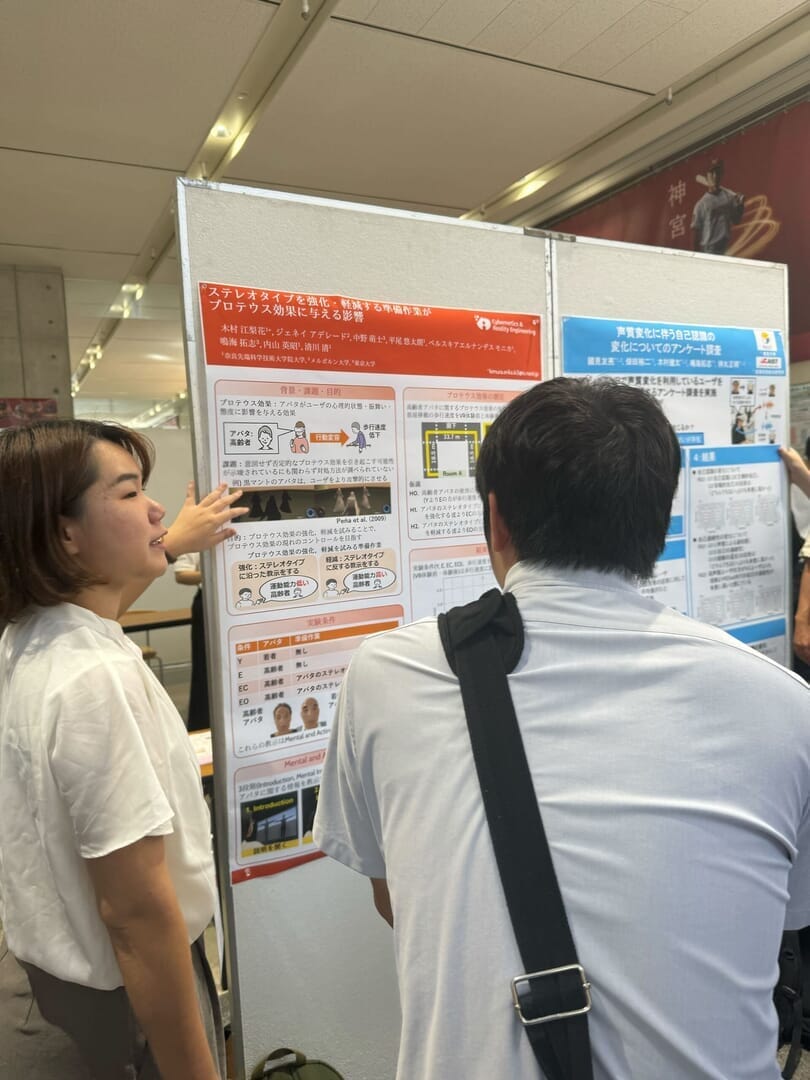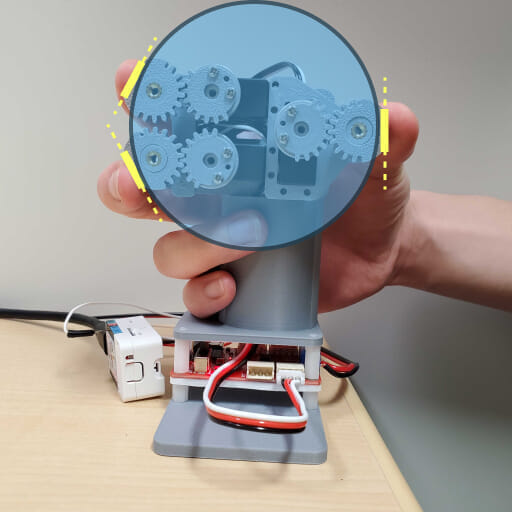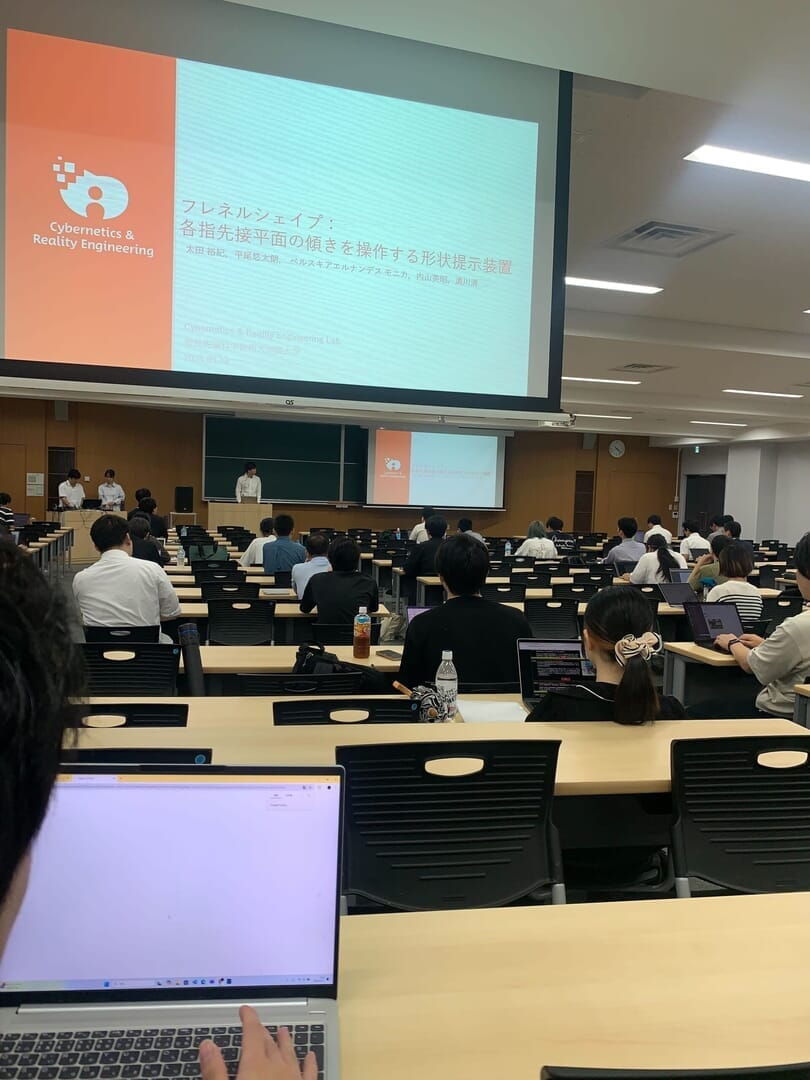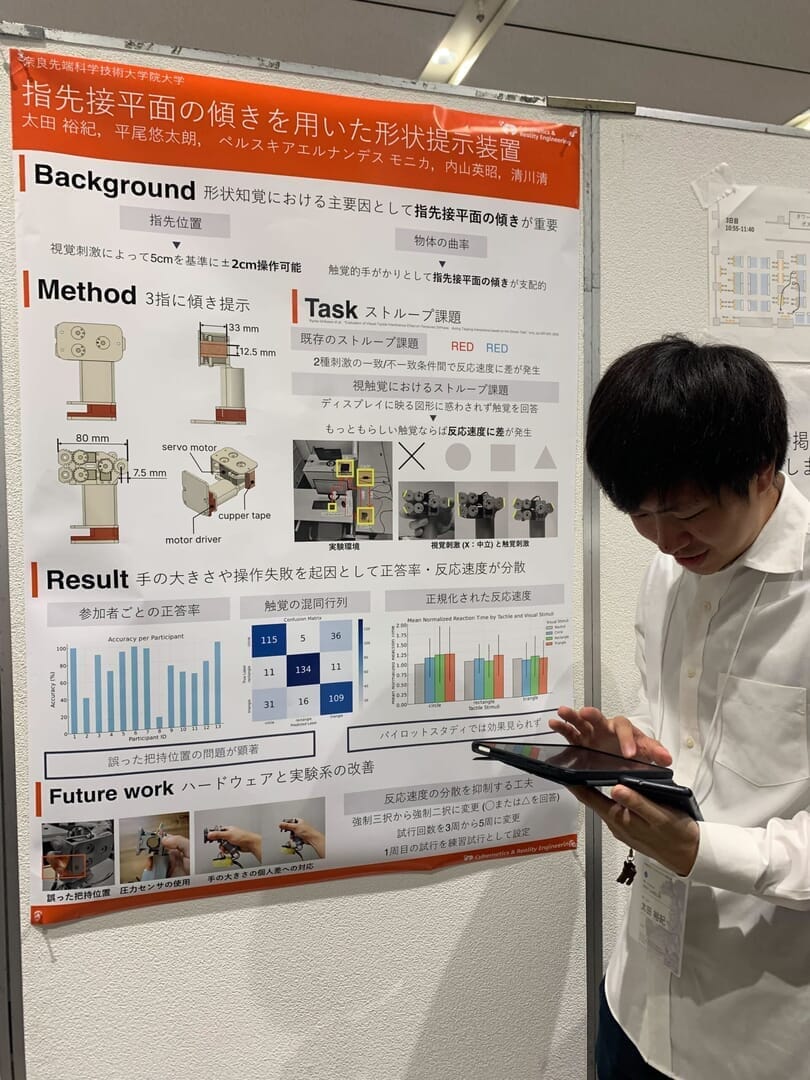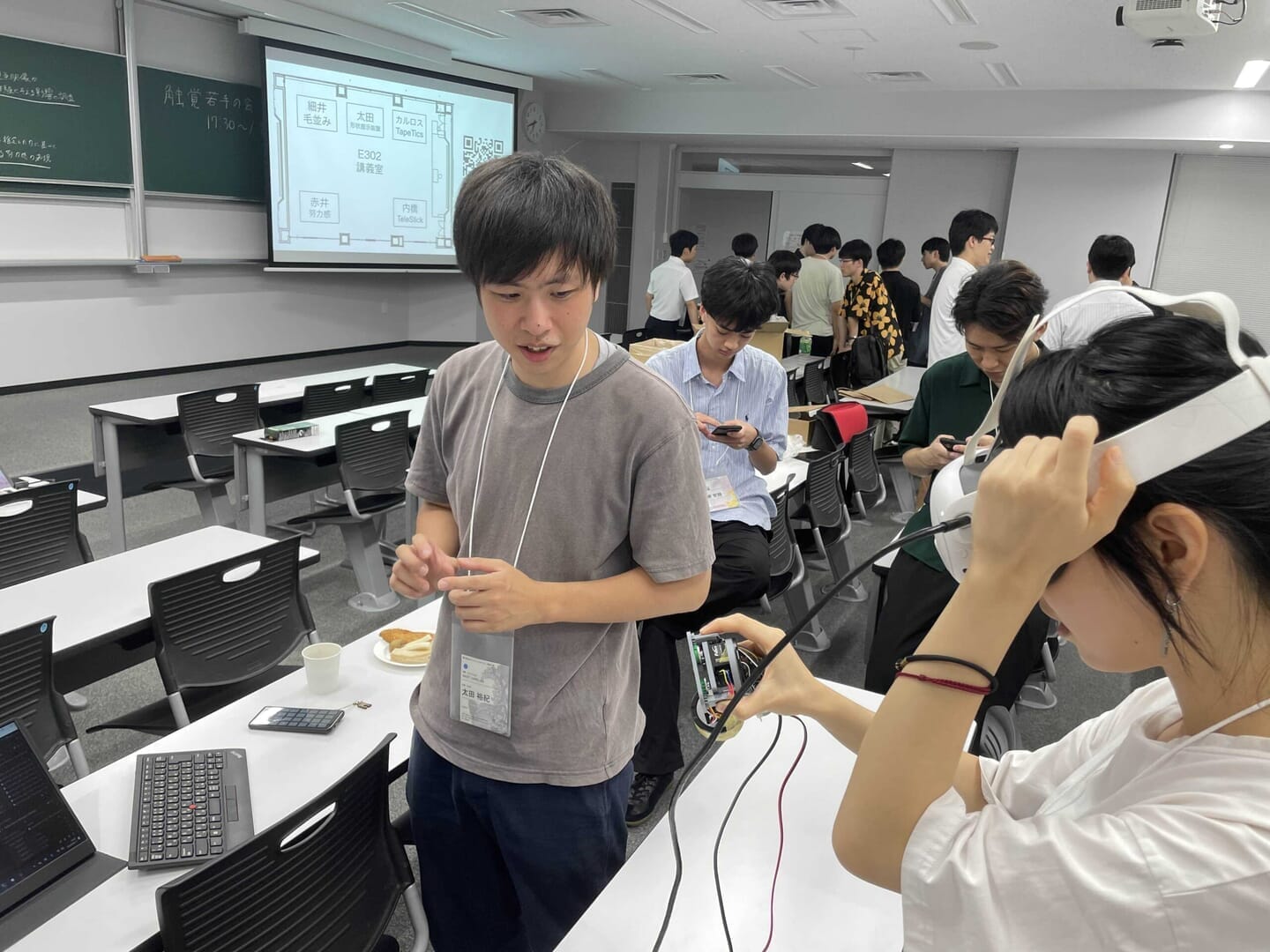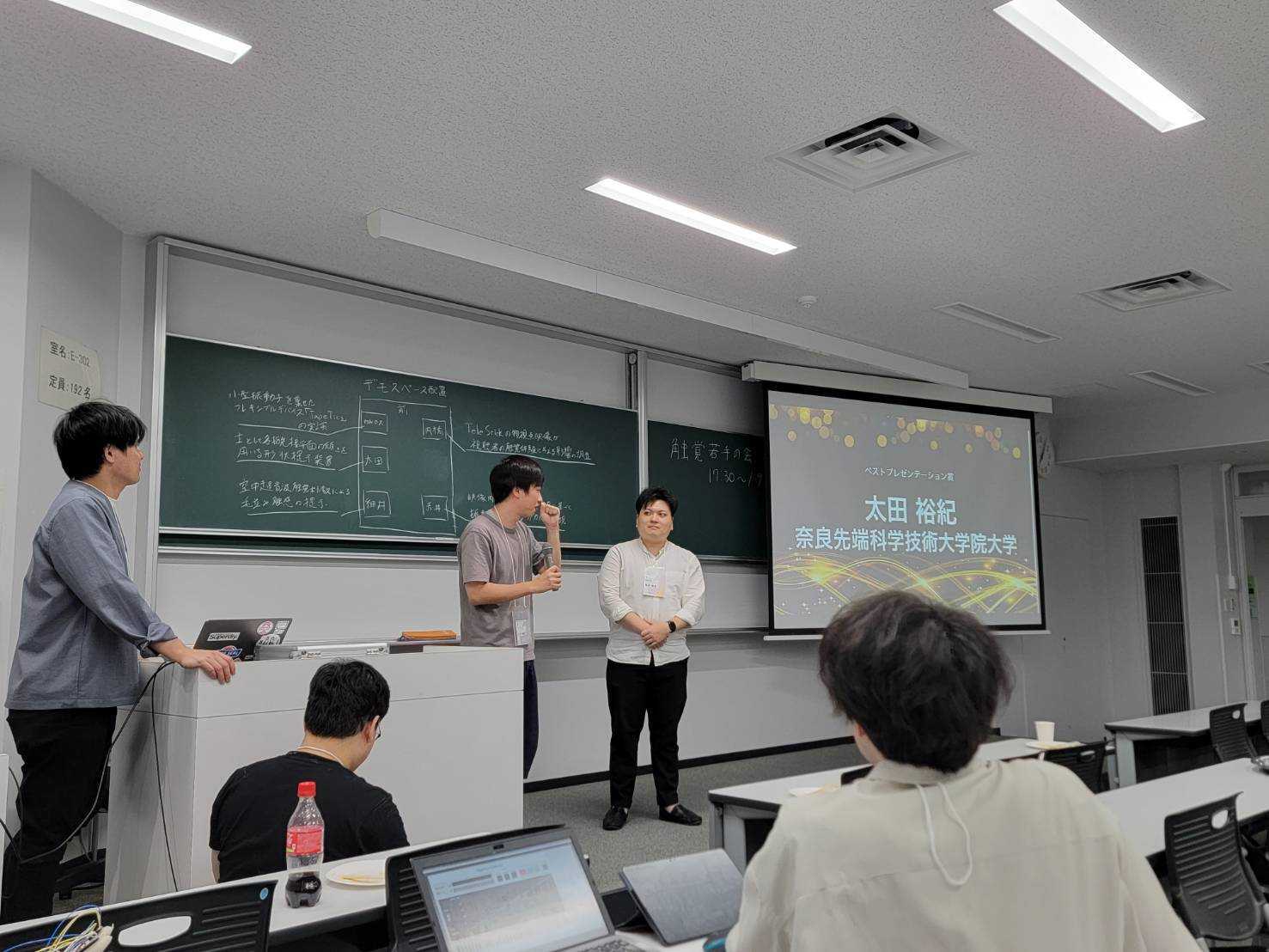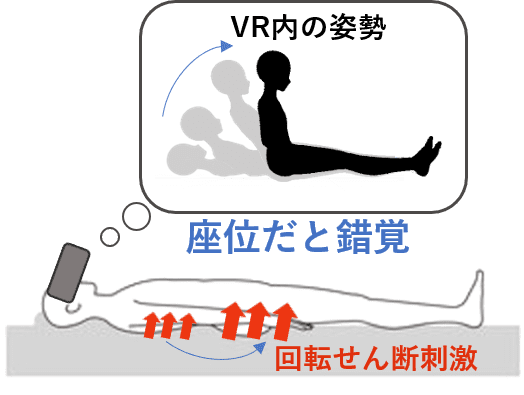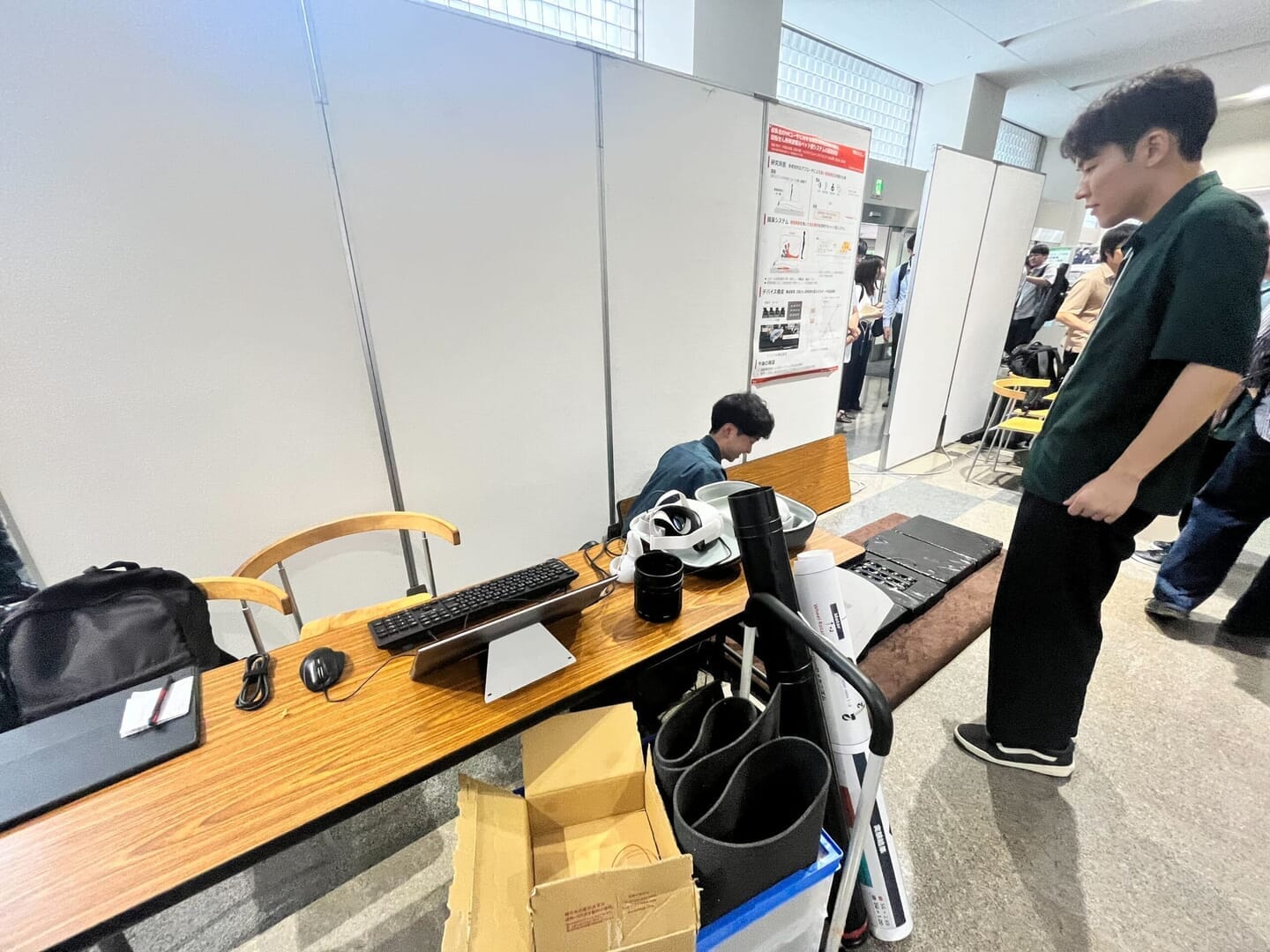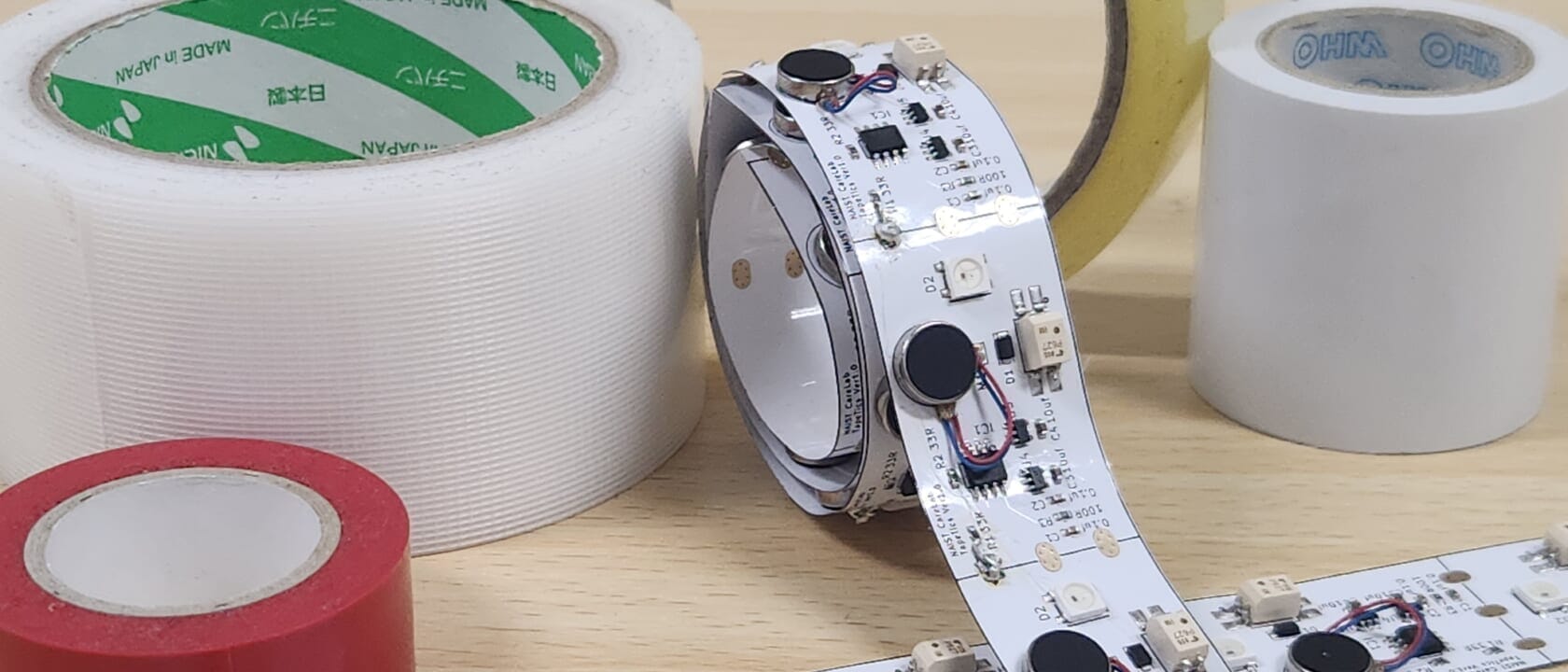From September 11 to 13, 2024, at Meijo University, six oral presentations were given by Mr. Paniagua (M2), Mr. Ohashi (M2), Ms. Kimura (M2), Mr. Ota (D1), Mr. Furuya (Kyushu University, joint research results), and Assistant Professor Hirao at the 29th Annual Conference of the Virtual Reality Society of Japan. Additionally, Iwasaki (M2), Paniagua, Ota, and Furuya showcased four demonstrations. Among these presentations, we received the following three awards:
(Awards)
- Academic Encouragement Award – Technical and Artistic Exhibition Category: “Development and Application of a New Haptic Toolkit Using Tape-tics” – Carlos Paniagua et al.
- Academic Encouragement Award – Oral Presentation Category: “Exploring Weight Perception Inducing Factors Through Qualitative Analysis of Essays on Weight Representation” – Yutaro Hirao et al.
- Best Presentation Award from the Young Researchers’ Haptics Group: “Shape Presentation Device Using the Inclination of Fingertip Contact Planes” – Hiroki Ota et al.
(Oral Presentations)
- 1A1-07: “Exploring Weight Perception Inducing Factors Through Qualitative Analysis of Essays on Weight Representation”
〇 Yutaro Hirao and Yuji Hatada - 1E1-05: “Development and Application of a New Haptic Toolkit Using Tape-tics”
〇 Carlos Paniagua, Hiroki Ota, Yutaro Hirao, Monica Perusquía-Hernández, Hideaki Uchiyama, and Kiyoshi Kiyokawa
Tape-tics is a tape-type device that arranges small vibrators on a flexible substrate. It can be cut to any length and attached anywhere, eliminating the need for complex wiring or specific designs tailored to particular body parts. Using a developed GUI controller, users can program any haptic expression. Furthermore, by integrating various sensors with a microcontroller, the system can support diverse applications. This paper introduces various applications using Tape-tics. - 1A2-07: “Slide Redirection: Redirected Walking by Interaction Between Visual and Sliding Haptic Handrails”
〇 Yuto Ohashi, Keigo Matsumoto, Yutaro Hirao, Monica Perusquía-Hernández, Nobuchika Sakata, Hideaki Uchiyama, and Kiyoshi Kiyokawa
Slide Redirection is a system that alters the sense of movement in VR spaces. Unlike conventional Redirected Walking (RDW) methods, which rely only on visual manipulation in translational direction, this system incorporates haptic feedback. A circular handrail rotates according to the user’s walking motion, providing friction-like tactile feedback and extending the effectiveness of translational RDW. Experimental results show that when using Slide Redirection, a slide gain of 2.69 allows for a translational gain of 2.67 ± 0.39. Additionally, it was suggested that when increasing the slide gain further, the detection threshold for noticing an artificially extended walking distance occurs at a translational gain of 3.00 or higher. - 2D1-09: “Effects of Preparatory Tasks Reinforcing or Mitigating Stereotypes on the Proteus Effect”
〇 Erika Kimura, Adelaide Genay, Kizashi Nakano, Yutaro Hirao, Monica Perusquía-Hernández, Takuji Narumi, Hideaki Uchiyama, and Kiyoshi Kiyokawa
The Proteus effect refers to the phenomenon where observing one’s avatar appearance influences behavior and attitudes to align with the avatar’s stereotypes. While this effect can encourage behavioral change, it also poses risks of unintentionally reinforcing negative behaviors. This study explores ways to weaken the Proteus effect by instructing users with stereotype-opposing information and examining its influence on the effect. - 3C2-03: “Fresnel Shape: A Shape Presentation Device Manipulating the Inclination of Fingertip Contact Planes”
〇 Hiroki Ota, Yutaro Hirao, Monica Perusquía-Hernández, Hideaki Uchiyama, and Kiyoshi Kiyokawa
In daily life, people grasp and manipulate objects of various shapes. Similarly, in virtual reality environments, presenting realistic shapes enhances immersion. Existing handheld shape presentation devices primarily fix the relative positions of fingertips or use pin arrays to present shapes. However, these methods fail to reproduce a critical tactile cue—the inclination of fingertip contact planes. This study proposes a novel shape presentation device that primarily conveys fingertip contact plane inclinations. - 3E2-01: “Fundamental Study on a Non-wearable Floating HMD for Supine VR Experiences”
〇 Yoshiki Furuya, Yuchi Yahagi, Tomoyo Kikuchi, Ayako Yogo, Kiyoshi Kiyokawa, and Shogo Fukushima
(Technical and Artistic Exhibitions)
- 1G-02: “Fundamental Study on a Bed-type System Providing Rotational Shear Stimulation to Induce Posture Illusions in Supine VR Users”
〇 Kodai Iwasaki, Yutaro Hirao, Daiki Hagimori, Monica Perusquía-Hernández, Hideaki Uchiyama, Arata Horie, and Kiyoshi Kiyokawa
One challenge in utilizing supine posture for VR experiences is presenting sensory cues that make users feel as if they are standing while lying down. This study aims to induce standing illusions by providing visuotactile stimuli mimicking the transition from supine to standing postures, aligning users’ perceived posture with their actual state. The system uses rotational shear stimulation as tactile feedback. This paper reports on the development of a bed-type system designed to induce the illusion of transitioning from a supine to a seated posture as a first step toward a full supine-to-standing transition. - 1G-23: “Development and Application of a New Haptic Toolkit Using Tape-tics”
〇 Carlos Paniagua, Hiroki Ota, Yutaro Hirao, Monica Perusquía-Hernández, Hideaki Uchiyama, and Kiyoshi Kiyokawa
Tape-tics is a tape-type device that arranges small vibrators on a flexible substrate. It can be cut to any length and attached anywhere, eliminating the need for complex wiring or specific designs tailored to particular body parts. Using a developed GUI controller, users can program any haptic expression. Furthermore, by integrating various sensors with a microcontroller, the system can support diverse applications. This paper introduces various applications using Tape-tics. - 3G-19: “Fresnel Shape: A Shape Presentation Device Manipulating the Inclination of Fingertip Contact Planes”
〇 Hiroki Ota, Yutaro Hirao, Monica Perusquía-Hernández, Hideaki Uchiyama, and Kiyoshi Kiyokawa
In daily life, people grasp and manipulate objects of various shapes. Similarly, in virtual reality environments, presenting realistic shapes enhances immersion. Existing handheld shape presentation devices primarily fix the relative positions of fingertips or use pin arrays to present shapes. However, these methods fail to reproduce a critical tactile cue—the inclination of fingertip contact planes. This study proposes a novel shape presentation device that primarily conveys fingertip contact plane inclinations. - 3G-29: “Fundamental Study on a Non-wearable Floating HMD for Supine VR Experiences”
〇 Yoshiki Furuya, Yuchi Yahagi, Tomoyo Kikuchi, Ayako Yogo, Kiyoshi Kiyokawa, and Shogo Fukushima
